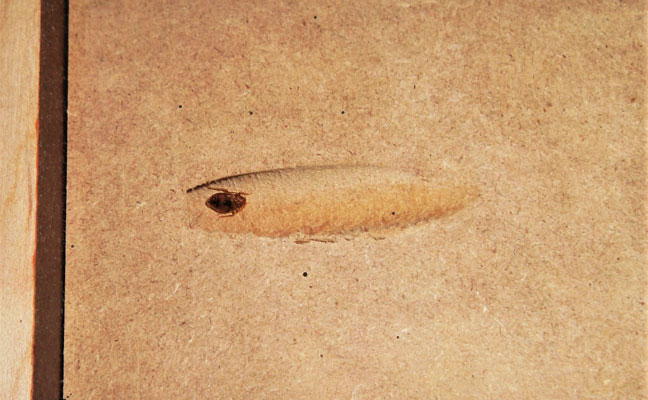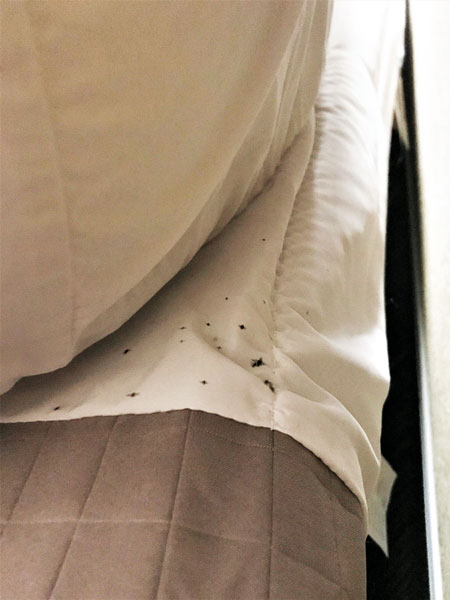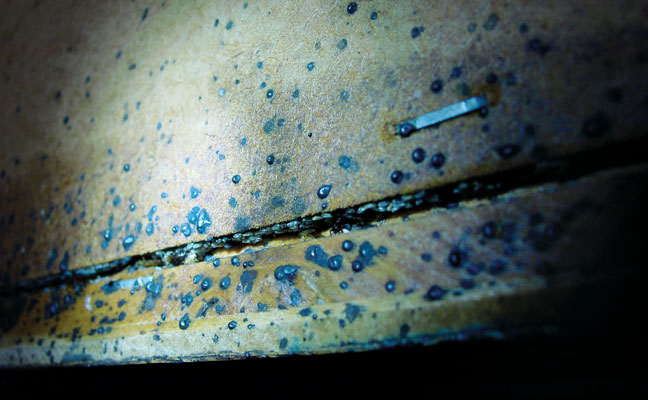- Bed bug droppings reveal a little bit about the bug.
- Sometimes a little information reveals a lot.

When you are inspecting your hotel room for bed bugs and you find only a few dry, granular droppings, it is evidence that the bed bug has not fed for days and is still seeking a meal. Had the bug fed, it would be sitting quietly and shedding the large thick droppings of a new meal. PHOTO: MARK SHEPERDIGIAN, BCE
The common bed bug (Cimex lectularius) feeds exclusively on blood, and has complex systems in place to process each meal. The process that follows determines the consistency of the bed bug’s droppings.
Even while it is still feeding, the bed bug will begin to shed large droppings with high water content. For the next day or so, the droppings will be watery and soak into a porous substrate — such as a bedsheet — and appear similar to ink stains.

One small area with a variety of droppings indicates one or a few bugs that have fed, even if only once. Large droppings suggest late-instar nymphs or adult bugs. PHOTO: MARK SHEPERDIGIAN, BCE
Having fed, the bed bug will digest its meal over the next few days, and its droppings will take on a thicker consistency, like pudding or tar. These droppings dry into round shiny spheres. As this happens, the bed bug shrinks into a flatter body shape.
If the bed bug can feed again, the process repeats, but if it finds no regular meal, it becomes flatter until it’s as thin as a flake. At this point, its droppings become fewer and are small, dry and granular — resembling the droppings of German cockroaches or coffee grounds.
In a healthy growing population, all these droppings can be found in bed bug habitats. When a single introduced bed bug is present, but hasn’t fed again, the only droppings found will represent a rough gauge of its feeding state.
It is important to make a thorough inspection of droppings, as evidence suggesting an introduced bed bug or a small group may be part of a larger group that lives on the other side of the bed.

A large area with many droppings, as seen here, indicates an established infestation that has begun an upward growth curve. PHOTO: MARK SHEPERDIGIAN, BCE
You can reach Mark Sheperdigian, BCE, vice president of technical services, Rose Pest Solutions, Troy, Mich., at shep@rosepest.com.
Leave A Comment